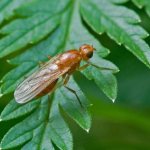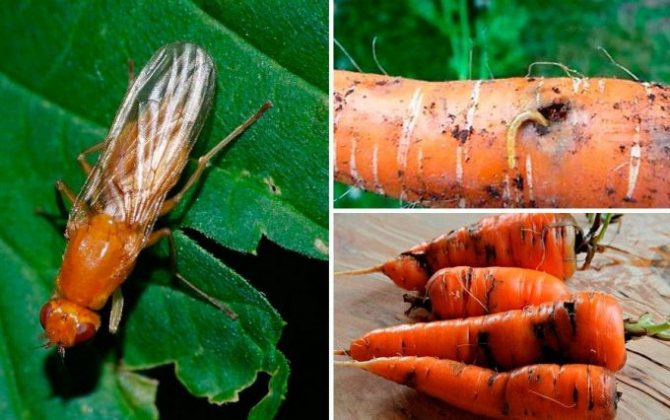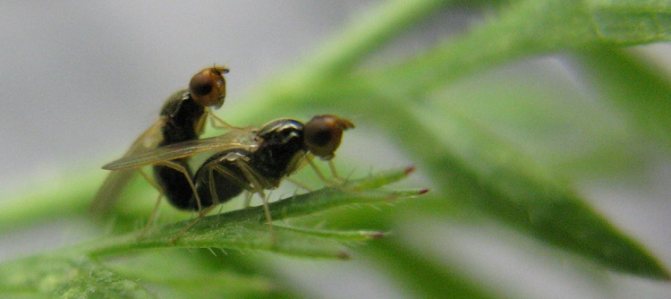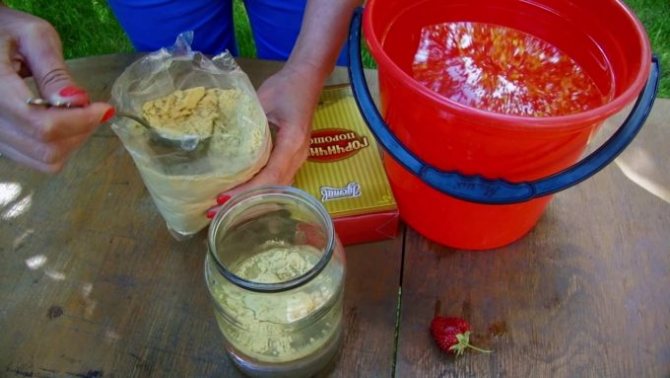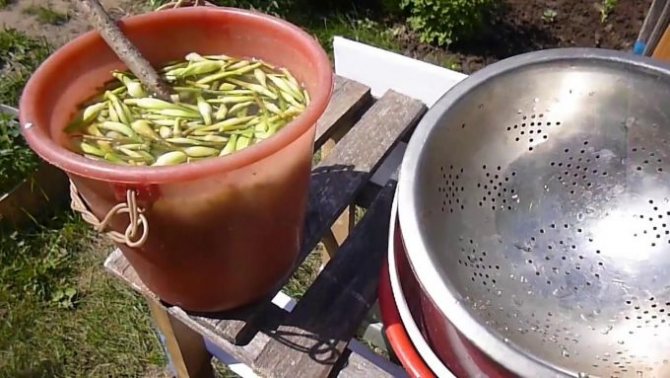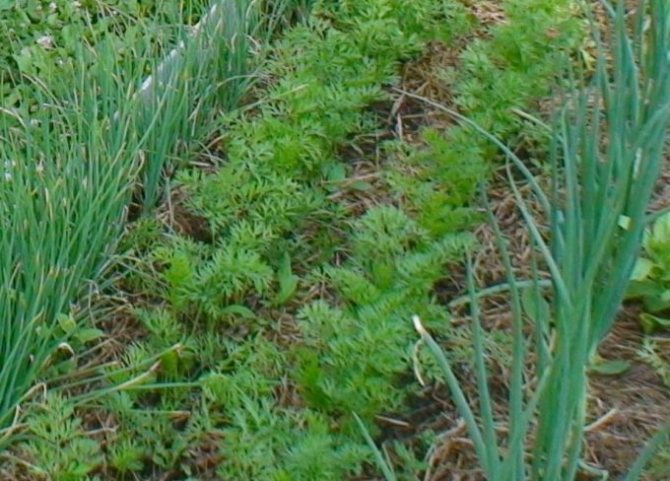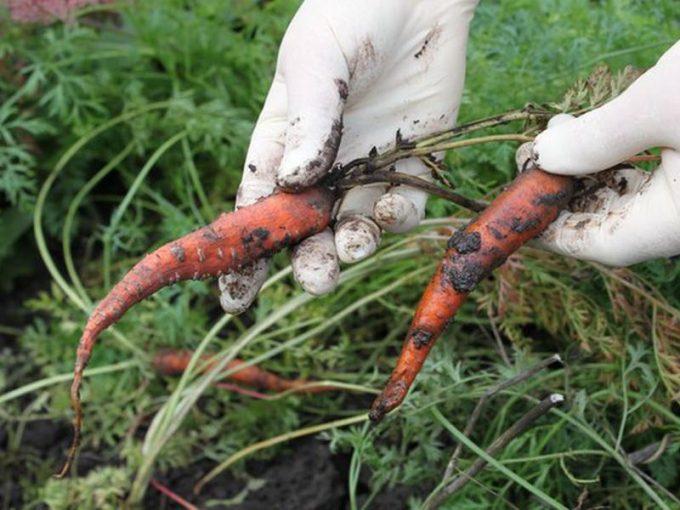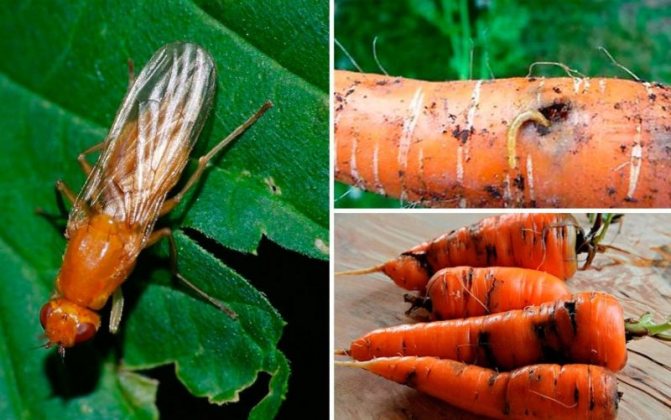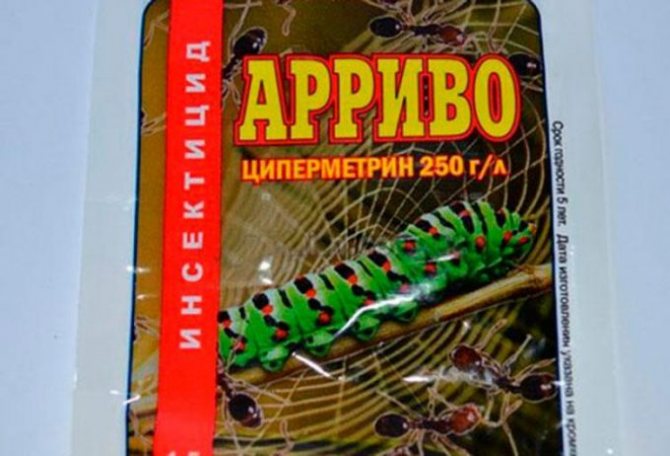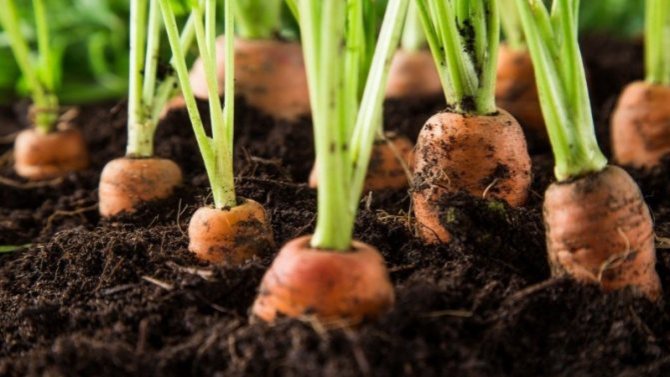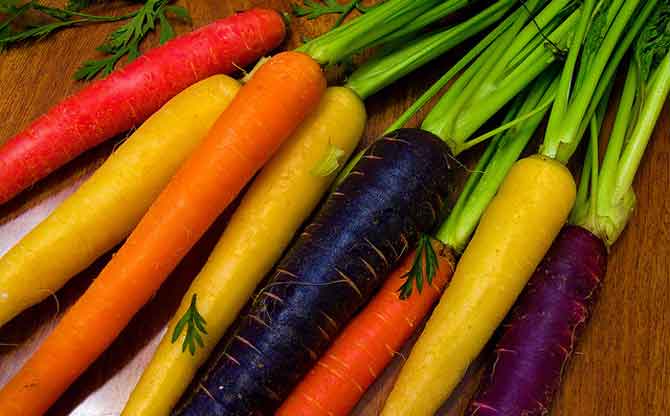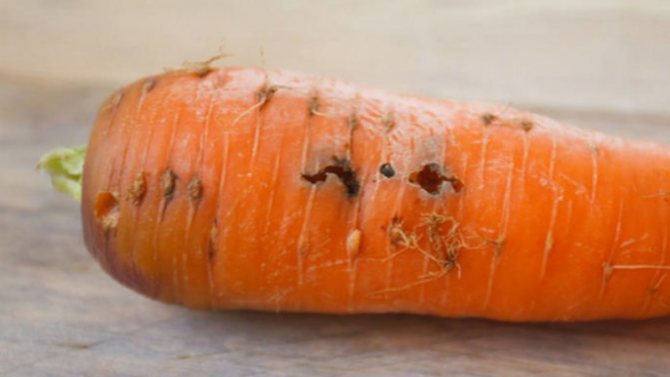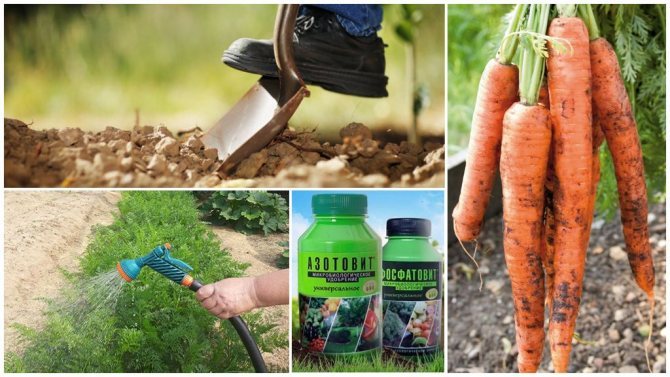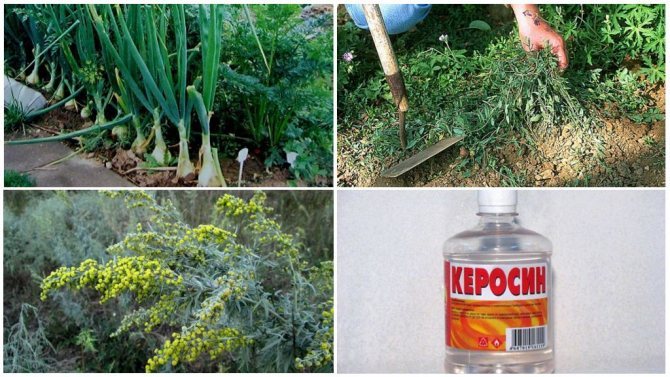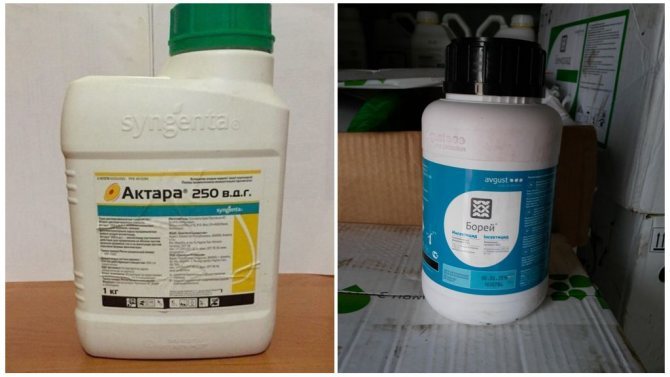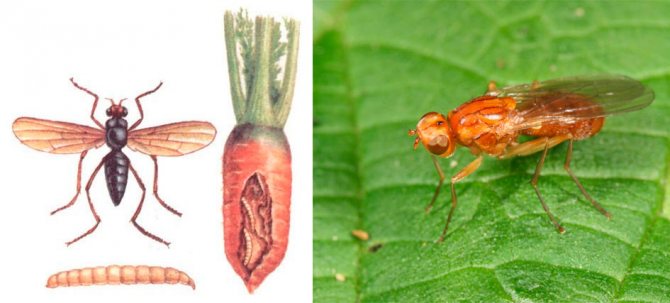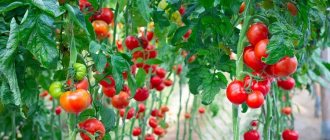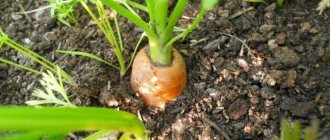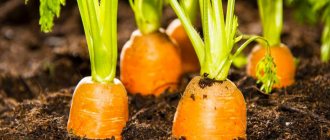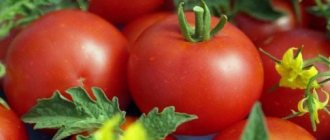Harvest carrots without problems
Probably no one even thinks about how to plant carrot seeds. This is such a familiar procedure that experienced gardeners will do everything automatically. But there are nuances that are worth talking about in more detail. For example, how to prepare the ground. When and what varieties, it is better to plant seeds. Plants, the proximity of which will allow you to get rid of pests, in particular carrot flies. And harvest storage is also an important task.
Carrot root pests
Carrot root crops have a lot of pests. These are carrot aphids, caraway moths, and carrot flies. But the most dangerous pest of carrots is without a doubt the carrot fly. Fly larvae bite into the root vegetable and damage it. Moreover, he manages to hatch twice during the summer. Control measures are approximately the same for all these pests. Let's take a closer look at the carrot fly.
The first emergence of the carrot fly occurs en masse from the end of May to the middle of June. The laying of eggs begins at the same time. High humidity is most favorable for the appearance of larvae. The larvae emerge from the eggs after a week and bite into the plant. After 20-21 days, they go into the ground and pupate. Flies emerging from the pupa climb to the surface by mid-July. Females begin laying eggs almost immediately.
The larvae of the second wave partly manage to move into the ground and pupate, partly, together with the harvested crop, they enter the storage facility. There is no soil for an exit, and the larva continues to feed in roots.
One of the signs of carrot fly damage will be a change to the red-purple color of the leaves of the plants. The best solution is to immediately remove the affected plants.
Pest control measures
There are several methods for dealing with onion flies. Let's list the main ones:
- Start preparing the land in the fall. After harvesting at the proposed site for the next planting of carrots, dig up the earth to the depth of a bayonet shovel. Some of the larvae will be removed by birds, some will freeze out in winter.
- Do not choose a low-lying area. It should be well ventilated. Remove affected plants and weeds when weeding. Make sure that carrots are planted at the site of the previous planting no earlier than an interval of 2-3 years.
- Try not to water the plants abundantly in late July or early August. This is the period when the second wave of larvae appears. Mulching with peat chips is recommended.
- Sprinkle the aisles with tobacco mixed with ash. The smell after spraying with water infused with garlic will also scare off flies. It retains the smell for 4-5 days, then the treatment must be repeated.
Video - Carrots and carrot fly
Preparing the soil for planting
Carrots require light to medium loam. Peat soils have shown themselves very well. Stagnation of water is not allowed. The soil must have good drainage. It is not recommended to apply for fertilization of the soil before planting fresh manure. The best precursors for carrots in the garden are tomatoes, cabbage, and beans. For acidic soils, add dolomite flour or chalk at one cup per square meter. Apply mineral fertilizers as well. Per square meter, a tablespoon of a mixture of urea and superphosphate, mix in a ratio of one to two.
After fertilizing, dig up the soil to a depth of about 30 centimeters. Thoroughly break up the lumps, compact slightly and pour with water and copper sulfate, two liters per square meter. Diluted in the proportion of one teaspoon per bucket of water.
Planting seeds before winter is one of the pest control measures. When preparing the land with this type of planting seeds, you need to carry out the same preparation as described above. It is better to prepare the ridges at the end of October, and plant seeds in early November to avoid germination of seeds in warm soil. For planting before winter, varieties of carrots Incomparable, Vitamin-6, Nantskaya-4, Losinoostrovskaya-13 are well suited.
Planting carrot seeds
There are several tricks to planting carrot seeds in the soil so that you don't have to thin out dense sprouts of sprouted carrots. Experienced gardeners are familiar with them. This is the planting of seeds glued to strips of paper. It is not difficult to maintain the distance between the rows when planting carrots, having previously made the furrows with a lath to a depth of about three centimeters. The distance between the rows is 10-12 centimeters.
It is possible to plant carrots with seeds in granules. When planting, it is necessary to maintain a distance between the granules of about 5-6 centimeters. Planting granular seeds will require increased watering at first to dissolve the granules. To facilitate planting when forming rows, you can use cells from egg packages (see photo below).
A rather effective method of control is a mixed planting of various plants. Carrot flies are discouraged by the smell of onions. That is why experienced gardeners recommend planting onions around the perimeter of carrot ridges. The inter-row planting of carrots and leeks has also proven itself well. Carrots have a beneficial effect on onions during the metabolism in the ground, and the smell of onions will scare away carrot flies.
You can add garlic to the same list, no matter what it is, spring or winter. It is recommended to plant winter garlic after 2-3 rows of carrots. Good neighbors for carrots are rosemary, spinach, beans, lettuce.
Years of a carrot fly fall on 2 periods: first, the larvae gnaw the roots and roots in May-June, then in July-August, sometimes reaching the storage. Only comprehensive control and prevention measures will help to get rid of carrot flies. Observe the crop rotation and select “friendly neighbors” for carrots, choose the right timing and place for crops, cover and thin out the plantings in time. Ash, burdock infusion and pepper solution are suitable as safe treatments.
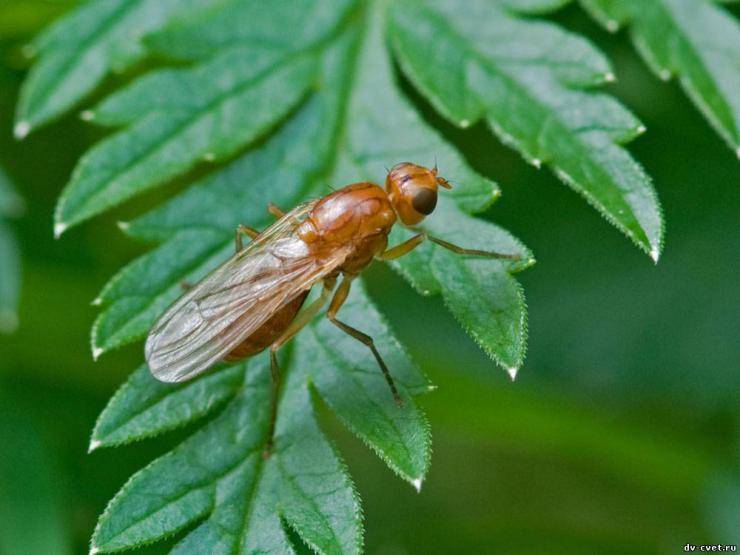
Carrot fly: pest description
The carrot fly is a shade-loving and moisture-loving insect. Its length is 4-5 mm, the color is brilliant black with a greenish tint.
- The years of the spring generation of carrot flies usually coincide with the flowering of apple and mountain ash. Females lay up to 10 eggs in the evenings on the soil near fodder plants; egg development lasts 6-12 days. The larvae gnaw into the root crop, grinding rusty-colored passages in it on the cut.
- Flies of the second generation fly out in late July - early August. The larvae damage the flesh of the root vegetables.
Carrot fly larvae are dangerous to root crops and plant roots:
- carrots,
- parsnips,
- parsley and celery,
- dill, caraway seeds, hemlock;
- can damage root vegetables in storage.
What is the harm from a carrot fly?
- Damaged plants are stunted.
- The leaves take on a red-purple hue, then turn yellow and dry out.
- Root crops rot, become woody and unsuitable for human consumption.
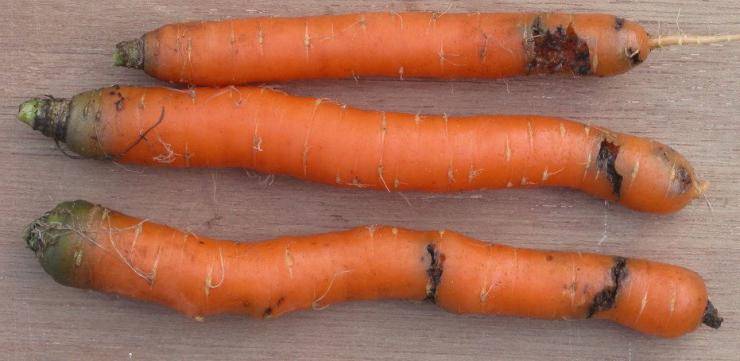

Photo: carrot roots damaged by a carrot fly
Measures for the control and prevention of carrot fly
If the carrot fly has chosen the site, it is difficult to get rid of it completely. Only complex measures can significantly reduce the number of pests.
_______________________________________________
DELICIOUS VARIETIES OF CARROTS _______________________________________________
Observe neighborhood and crop rotation
- Carrots are best alternated with onions, radishes, salad.
- It is advisable to place crops of carrots next to onions and aromatic herbs, since the carrot fly does not tolerate their smell.
_______________________________________________
MIXED LANDING AGAINST PESTS _______________________________________________
Cover garden beds with carrots
- After sowing seeds and watering, you can cover the garden
any
covering material
(lutrasil, agril, etc.), having previously installed soft metal arcs. - As the carrots grow, it is necessary to pull the arches out of the ground to increase the space for sprouting.
- You can raise the shelter and water it either early in the morning or in the evening when the fly is not flying.
Thus, the carrots will "sit in shelter" until the end of June, and when the threat is gone, the plantings can be opened.
Sow carrots early
- Sow
carrots are needed optimally
early dates
in dry, unshaded areas. - It is even better to use podzimny sowing.
_______________________________________________
HOW TO SOW CARROTS IN SPRING OPEN SOIL _______________________________________________
Sow carrots in open areas
- Since the carrot fly loves shade and moisture, it is advisable to place crops on well ventilated and lighted areas
, away from fruit plantations.
Thin carrot shoots
Seedlings are necessary in a timely manner thin out and weed.
- This can only be done early in the morning or in the evening.
- Water the carrots before thinning.
- The fly is attracted by the smell of carrots, so all plucked carrots must be removed immediately.
- Throughout June loosen often
soil between plants, adding ash.
After thinning, it is necessary sprinkle ash or tobacco dust
between rows of carrots to repel flies.
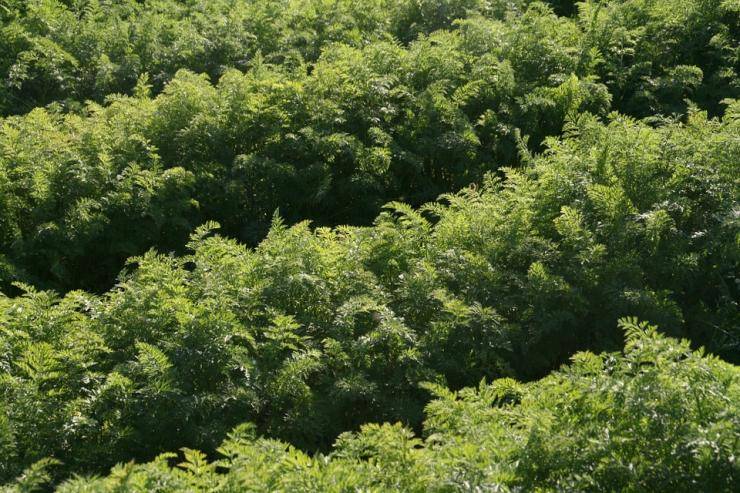

How to treat carrot fly beds
Folk remedies against carrot flies give a good effect. For the treatment of carrots, the preparation Fitoverm is also used.
Infusion of burdock from carrot fly
- At the beginning of the flowering apple tree, dig out the burdock by the root.
- Chop about half of the baby's tub, knead with your feet to make the juice stand out.
- Fill with water and leave to infuse for 5-7 days.
- Then strain, dilute 3 times with water, add laundry soap and spray the plants.
The same composition can be used to treat fruit trees against aphids.
Carrot fly pepper solution
You can spray the beds with a solution of pepper.
- For 10 liters of water, take 1 tablespoon of ground black or red pepper and 1 teaspoon of liquid soap.
- One liter of solution is enough for 1 m² of crops.
_______________________________________________
TOADS AND FROGS FROM CARROT FLY _______________________________________________
Copying of material is encouraged if there is an active link to the site
Life cycle
The insect hibernates in the soil, in the form of a pupa. If root crops suddenly remain in the field, the larvae preserved in them can also successfully overwinter.
When the air temperature reaches 15-17 ° C, flies start flying. This pest loves the shade, it is found in damp, shaded areas, near water and hedges made from live shrubs. In open areas, the fly is less harmful.
The emerged insects lay their eggs in May: from the 15th to the end of the month. If the spring is cold, laying can occur in early June, when a couple of leaves appear on the carrots. Females lay their eggs in the ground near the plants.
Individual insects live for about 12 days. Their summer and egg-laying period is 1-1.5 months.
The larvae appear 4-17 days after the eggs have been laid. It depends on the temperature. They feed on plant juices for about 3 weeks, after which they crawl into the soil, where they begin to pupate.
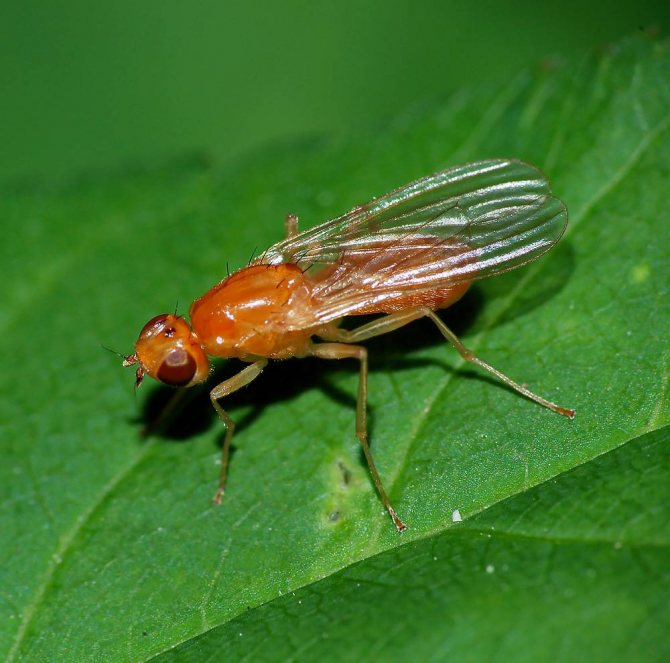

Having pupated, insects crawl to the surface. They form the second generation of garden pests.Their years begins in mid-July and ends in mid-August.
Females lay their eggs in densely growing crops. In autumn, some of the larvae manage to pupate, while others, with the harvest, end up in storage, where they continue to damage it, feeding on vegetable juice.
Important: The danger of an insect is that roots damaged by its larvae cannot be stored for a long time. As a result, most of the crop dies.
Theoretical foundations of garden pest control
There are not many methods of pest control of cultivated plants at the disposal of the zealous gardener. The task comes down to the fact that it is necessary to choose not only the most effective of them, but above all the safest and most economically justified. For clarity, it is convenient to use the example of confronting a carrot fly. After all, carrots are not so terrible climatic conditions as this is a harmful insect, capable of giving 2 full-fledged offspring per season.
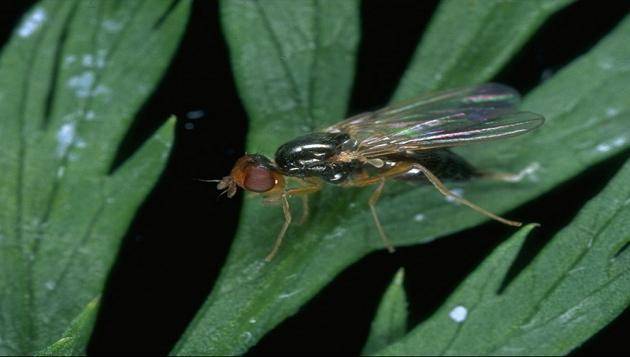

The fly itself is not involved in the defeat of root crops. Its larvae specialize in this, but it is she who is the initiator. Having emerged en masse in May, the fly immediately begins laying numerous eggs on young carrot sprouts and on the ground around it. This is how the carrot fly cycle begins in carrot beds. It was at this time that she should already feel that a struggle began with her:
- chemical method. The desire to use this method as rarely as possible is understandable, but it is simply impossible to completely abandon it. The most effective are drugs such as the popular "Decis" advertised in the forums "Aktara" and no less well-known among gardeners "Fitoverm". All preparations do not decrease their activity within 20 days and are not washed out during watering. Destroying the larvae in the first twenty minutes, these insecticides prevent their development for a long time. Here are just root vegetables can be used for cooking or raw no earlier than 20 days; 333
- the folk methods of war with the carrot fly are somewhat less effective, but much safer. They involve the use of various infusions on ash, nettle, tobacco dust or tomato tops. All these infusions are used with the addition of a soap solution for better retention on the plant. It is better to carry out processing in the evening and morning hours at least 3 times;
- biological intimidation. Of course, we are talking about the feathered inhabitants of garden plots, insects that are enemies of the carrot fly - ground beetle, lacewing, scolia wasp and, of course, ladybug. Planting, among the beds of carrots, calendula or marigolds, will not only scare off the carrot fly, but also attract its enemies - ichneumonids. In addition, these are pathogenic, for many pests, bacteria - "Bitoxibacillin", "Dendrobacillin", "Lepitocide". They must be used in accordance with the instructions for the drug;
- the creation of unbearable living conditions by choosing resistant varieties of carrots to the carrot fly;
- by strict adherence to the agronomic parameters of the selected variety. Exceptions to practice, preparation of beds for carrots, the use of fresh manure. Placing carrots in well-lit and ventilated beds without thickening. Placement of onion and garlic rows in carrot plantings. Compliance with the recommended crop rotation. The use of low barrage structures;
- prevention and strengthening of the immunity of the plant itself through various dressings.
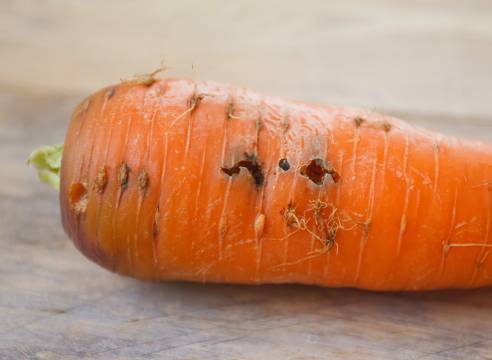

Often, it is in the complex method of struggle that the maximum success lies.
Fight with folk remedies
The main methods for destroying the pest are reduced to proper agricultural technology. Like many other insects, a carrot fly attack is easier to prevent than to fight a large population. In the conditions of commercial farms, pest control is carried out by observing crop rotation.In gardens or summer cottages, you can use chemical, mechanical methods, as well as proven folk remedies.
We suggest that you familiarize yourself with: Tablets for worms for cats: price and reviews. The most effective pills for worms
The funds are used when a large number of flies appear and extensive planting lesions. Insecticides can act on eggs, larvae or adults, as well as in a complex manner at all stages of insect development. Before using chemicals, be sure to read the instructions for its use and observe the necessary proportions while diluting the solution.
- Actellic is a contact drug that acts on larvae. The active substance is pirimiphos-methyl. In larvae, metabolism and the transmission of neuromuscular impulses in the body are disturbed. The duration of the effect lasts for 2-3 weeks from the day of treatment. The working solution is 2 ml of the product per 0.7 l of water, 1 l of the solution is per 10 sq. meters of landings.
- Decis is a contact-intestinal insecticide that affects the larva and the adult. The active ingredient is deltamethrin. The drug blocks the transmission of nerve impulses of the insect, causing paralysis. The effect occurs within 1-1.5 hours after the contact of the fly with the drug.
- Aktara is a contact-intestinal preparation in which the active ingredient is thiamethoxam. Acts on the nervous system of adults and larvae, causing paralysis, and then death within a few hours after contact with the insecticide. The effectiveness of the product is not affected by precipitation and ambient temperature.
Folk methods are time-tested, based on organic material, therefore they are absolutely safe for the environment and humans. These are mainly decoctions or tinctures for spraying and watering the soil. The most effective means are recognized:
- A decoction of tomato tops is prepared from 4 kg of green parts of tomatoes and 10 liters of settled water, if possible, rain. The tops are boiled for 30 minutes, the broth is filtered and defended for 3 hours. For cooking, you will need 3 liters of broth and 10 liters of settled water, to which add 30-40 grams of fragrance-free liquid soap.
- Wormwood infusion. The green part of the plant is folded into a container, then poured with boiling water and insisted at room temperature until it cools completely. The infusion is filtered, then divided into three equal parts. To obtain a solution, one part of the infusion is diluted in 7 liters of settled water.
- Coniferous flour is prepared for dusting the beds. Branches with needles are ground in a meat grinder, and the resulting gruel is dried to a state of flour. The resulting product is used to treat carrot beds. The effect lasts until the coniferous smell disappears.
- Garlic infusion is prepared from 200 grams of garlic gruel and 2 liters of boiling water. The mixture is infused for a day, then filtered and water is added to 10 liters. The resulting solution is sprayed with carrots or watering the beds in the calculation - 1 liter per 10 sq. meters.
Choosing Fly-Resistant Carrot Varieties
There are no varieties of carrots that are completely resistant to this gluttonous insect. It is ready to inflict defeat at least on all varieties of carrots at once, at least selectively. But some of them are more to her taste, while others she simply dislikes. Seed organizations, when advertising different varieties of carrots, indicate their resistance to various diseases. But they all constantly avoid mentioning the attitude of the advertised variety to the carrot fly.
More recently, a carrot variety has appeared that has a carrot fly icon on its seed packet. The rest of the varieties can be judged only by indirect signs, since it has long been known what the carrot fly likes and what it tolerates, but with difficulty. What smells does it refer to as attractants, and what smells it refers to as repellents. Their ratio determines her addiction to a particular variety.
The causes of the pest
The carrot fly prefers a warm and humid place in which it lays its larvae. Therefore, a pest appears in the garden for the following reasons:
- excessive watering of the root crop or frequent rains;
- lack of sunny color, which is associated with the wrong choice of a place for planting;
- thickened plantings, since the optimal distance between individual roots is not maintained.
The pest enters the garden in search of food and a place to lay eggs. Due to the presence of several generations of flies, carrots are negatively affected several times per season. Therefore, before planting a root crop, the correct choice of a place in the garden is assessed.
Each variety is resistant in its own way
Since the degree of plant resistance to the carrot fly can be quite simply regulated in numerous ways, the taste and yield are purely individual in nature. With a fair degree of certainty, it can be argued that it is the last characteristics that will be of paramount importance when choosing a carrot variety. And only other things being equal, the choice will be made in favor of the variety with the best resistance to carrot fly.
The mechanism of the cultivar's attractiveness for the carrot fly is well understood. The more a carrot contains chlorogenic acid in tops, the more energetic the fly is interested in this variety. At the same time, the increased content of carotene and various sugars is perceived by its larvae with obvious disgust. Therefore, a carrot variety that is resistant to carrot fly should contain the maximum amount of carotene and sugars with a minimum content of chlorogenic acid in the tops.
By comparing these indicators, several varieties of carrots with relatively high resistance to this pest were identified:
"Nantic Resistafly"
This is exactly the variety for which the carrot fly has the maximum aversion. This is due to the high content of carotene and extremely low (up to 2 mg / 100 g) chlorogenic acid in the tops. It is surprisingly tasty and its yield reaches 9 kg / m2. A root crop of a beautiful, orange color, weighing more than 100g. Its length reaches 160 mm and its diameter is close to 35 mm. The root crop is cylindrical with a very small core. Carrots "Nantic Resistaflay" are good fresh, but at the same time they are perfectly stored.
"Nantes 4"
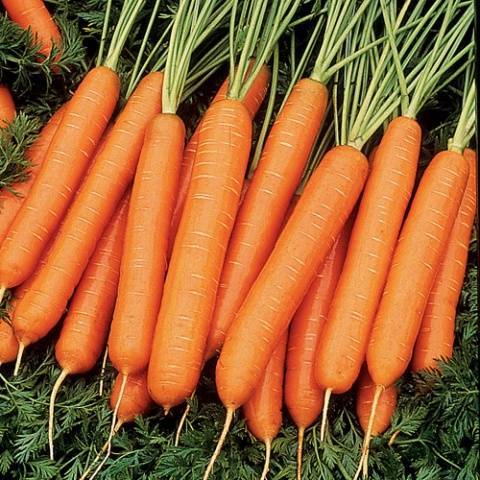

The growing season lasts from 80 to 110 days. The length of the root crop is approaching 170 mm, and its diameter is no more than 20 mm. It has a pleasant orange color, which turns purple in the area of the head. The yield is close to 6.6 kg / m2. It has a pleasant taste and excellent consumer characteristics. It is not affected by rot and mold during storage. Resistant to flowers. It retains its original characteristics for a long time. Due to the high content of carotene (over 6.5 mg) and sugars (up to 8.5%), it is suitable for baby and diet food;
"Amsterdam"
The growing season is no more than 80 days. The root crop has a cylindrical, even orange fruit. Its dimensions reach a length of 200 mm, with a diameter of 40 mm. The weight of one root vegetable reaches 150 g. The pulp is of good taste, juicy and tender, with a very small core. The yield is approaching 6.0 kg / m2. These carrots are not intended for long-term storage.
"Shantane"
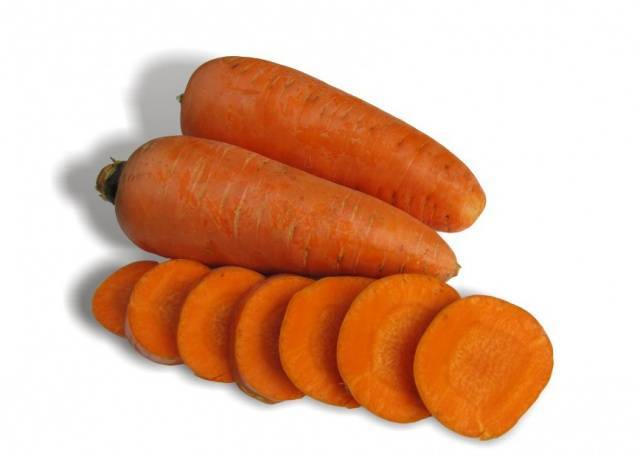

The growing season of the plant is approaching 140 days. The fruit has an even, conical shape, 160 mm long, orange, turning into red. The weight of many root crops exceeds 200 g. At the same time, the yield of the variety reaches 8.5 kg / m2. Surprisingly juicy fruits have a good taste and pleasant aroma, which, of course, with a high content of carotene and sugars (14 mg and 7%, respectively). The variety is resistant to various diseases of carrots, not prone to flowering and stemming. Has a universal application;
Calgary F1


The growing season is not more than 130 days.The root crop has an elongated conical shape with a blunt, slightly rounded tip. Some fruits are longer than 230 mm. and the diameter is 50 mm. They have an attractive orange color and good taste characteristics. The yield of this variety sometimes exceeds 7 kg / m2. Has a universal purpose. Stores well. Excellent resistance to cracking and blooming.
"Losinoostrovskaya 13"


The growing season of this variety is no more than 115 days. It has a beautiful, cylindrical shape of juicy orange fruit with a rich color. Their size reaches 200 mm in length and weighs 170 g. This variety is not very picky about the soil, but requires intensive watering. Its yield can reach 8 kg / m2. It has excellent (thanks to carotene and sugars) taste characteristics. The variety is extremely resistant to flowers and many diseases.
Prevention measures
- adherence to planting rules - do not plant carrots in the same place for two years in a row;
- alternation of culture - sowing carrots in places where tomatoes, onions, radishes previously grew;
- thinning plantings, but this method is not applicable to contaminated soil;
- with already affected soil - initially a rare planting on the tape;
- combining beds with onions or garlic;
- compliance with the irrigation regime;
- seed treatment before planting;
- deep plowing of the soil in autumn and spring;
- fertilizing the soil with compost and humus, and not fresh manure;
- the use of green manure - yarrow, wormwood.
If possible, carrot beds are transferred from year to year over long distances - about 500 meters, however, this method of prevention is applicable mainly for large plantings and commercial agricultural enterprises.
Also, to prevent infection and spread of the pest, it is not recommended to plant other umbrella plants in neighboring beds - dill, parsley, celery, turnips.
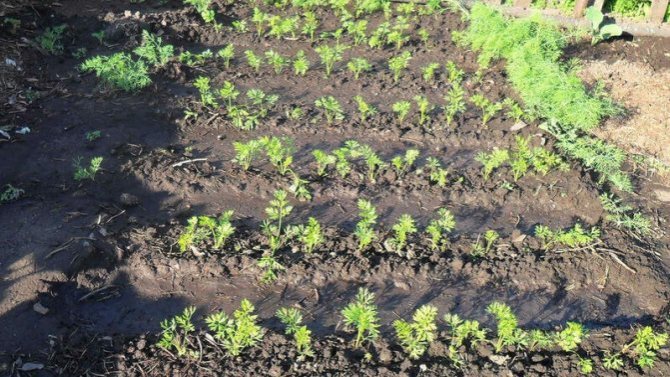

Carrot varieties resistant to carrot fly
| Nantic Resistaflay F1 | |
| An early ripe hybrid of the Nantes cultivar. The period from germination to harvest is 85–90 days. The tops are dark green, erect, dense. The root crop is cylindrical, smooth, bright orange, excellent taste. The maximum length is 18 centimeters, the maximum weight is 120 grams. Small orange core. It is stored no more than five months, therefore it is recommended for an early harvest and fresh consumption. | |
| Flyway F1 | |
| An early ripe hybrid. Root crops are conical with a blunt tip, orange, even, smooth. The maximum length is 20 centimeters. Differs in high sugar content, juiciness and delicate taste. | |
| Maestro F1 | |
| Medium late hybrid of the Nantes cultivar. From germination to the first harvest, 120-130 days pass. The leaf rosette is powerful, dark green. The root crop is cylindrical, blunt-pointed, bright orange. The maximum length is 21 centimeters. The hybrid is resistant to many diseases. Subject to long-term storage. | |
| Cardinal | |
| The variety belongs to the Chantenay type, late ripening. The growing season is 140-155 days. Root crops are conical in shape, with a blunt tip, dark orange in color. The maximum length is 20 centimeters, the maximum weight is 145 grams. The content of carotene and sugars is high. Differs in a friendly return of the harvest, suitable for long-term storage. Recommended for juicing, baby food, canning, freezing. | |
The second group of hybrids, on the contrary, is widely represented on the market. But the resistance of this carrot to the carrot fly, so to speak, is even more relative. Let's just say: based on the experience of gardeners, these varieties are less affected by the pest, but we do not have accurate information about stability or instability. And we can only check on our own experience.
Signs of pest damage
The denser the crops of carrots, celery and parsley, the greater the degree of plant damage.And vice versa, the more the crops are blown by the wind during the period of mass flight, the less plants are colonized by this pest.
Leaf color - the first indicator of damaged plants. If you notice plants with a purple-reddish tint of leaves in the beds, remove them immediately. These are damaged plants - the plants affected by the pest will gradually dry out and die, and the carrots drilled by the larvae will become ugly, woody and tasteless, unsuitable for human consumption.
Carrot fly-resistant carrot varieties according to gardeners
| Ibiza F1 | |
| Medium late hybrid of the Berlikum cultivar type. The growing season is 118 days. The tops are semi-erect or spreading with long leaves. The root vegetable is orange, very long, fusiform with a pointed tip. The maximum weight is 170 grams. The taste is excellent, the roots are very sweet. Recommended for fresh use, for preparing baby food and for winter storage. | |
| Healthmaster F1 | |
| The leaf rosette is powerful, green, up to 45 cm high and up to 15 cm wide. Root crops are conical in shape, medium in size. The maximum length is 25 centimeters. The rind is smooth, deep burgundy, and the flesh is orange-yellow, very tasty. The carotene content is 30-35% higher than in conventional varieties. Resistant to cracking. | |
| Calgary F1 | |
| A mid-season hybrid, the period from germination to technical ripeness is 120-127 days. Root crops are elongated, conical, bright orange, juicy. The maximum length is 23 centimeters, the maximum weight is 165 grams. The taste is excellent. Of the features of this hybrid, I would like to draw attention to its high yield, good keeping quality and resistance to diseases. | |
| Olympus | |
| A late-ripening variety of the Flakke type. Ripening time 130-140 days from germination. The tops are semi-spreading, long. Root crops are conical, even, smooth, bright orange. The maximum length is 25 centimeters, the maximum weight is 140 grams. The core is medium. The fruit tastes juicy and sweet. A productive variety suitable for long-term storage. | |
| Monanta | |
| A mid-early variety of carrots belonging to the Nantes variety. From germination to the first harvest, 90-100 days pass. The tops are strong. Root crops are cylindrical with a blunt tip, smooth, bright orange. The maximum length is 18 centimeters. The core is small. The variety is distinguished by excellent taste, juiciness and high sugar content. Stored for 4-5 months. | |
| Perfection | |
| Late-ripening variety, from germination to technical ripeness 120-150 days. Root crops are conical with a rounded tip, large, orange in color. The maximum length is 30 centimeters, the maximum weight is 170 grams. The core is medium. Root vegetables are prized for their juiciness, sweetness and high carotene content. The variety has excellent shelf life for 9 months, is resistant to cracking and wet rot. | |
| Vitamin 6 F1 | |
| A mid-season variety of the Berlikum / Nantes type. The ripening period is 80-100 days. The tops are semi-standing, green. Smooth roots have a cylindrical shape with a blunt tip, orange color, star-shaped and faceted core. The maximum length is 15 centimeters, the maximum weight is 165 grams. Excellent taste, high carotene content. Suitable for winter storage, resistant to blooming and cracking. | |
| Forto | |
| Mid-season variety of the Nantes type. From germination to harvesting, 108-112 days pass. The root crop is cylindrical, obtuse, smooth, orange in color with a small pith. The maximum length is 20 centimeters, the maximum weight is 125 grams. The pulp is firm, firm, sweet. The variety is resistant to cracking and blooming, very well kept. | |
| Nantes Semco F1 | |
| A mid-ripening hybrid of the Nantes cultivar, the ripening period is 90-100 days. The tops are green, erect. Cylindrical roots, bright orange in color.The maximum length is 18 centimeters, the maximum weight is 150 grams. Good taste. The hybrid is resistant to flowering, can be stored for 6 months. | |
| Coral | |
| A late-ripening variety of the Flakke type. The growing season is 140-150 days. Root crops are conical, orange, dense, very juicy and tender. The core is medium. The maximum length is 20 centimeters. The maximum weight is 110 grams. The variety is valued for its high yield and good keeping quality in winter. | |
| Crunchy | |
| Mid-season variety (from germination to harvesting 100-120 days). Root crops are large, conical, bright orange with a small pith. The maximum length is 20 centimeters, the maximum weight is 170 grams. The fruits are juicy, tender, sweet, high in carotene and sugars. The variety has excellent keeping quality. | |
| Cardame F1 | |
| A late-ripening hybrid of the Flakke cultivar type, the period from germination to harvest is 135-155 days. The rosette of leaves is semi-spreading. A conical root crop, obtuse, dark orange in color. The maximum length is 20 centimeters. The maximum weight is 150 grams. Good taste, recommended for juicing. The variety is intended for long-term storage. | |
| Incomparable | |
| A mid-season variety, from germination to technical ripeness 105-125 days pass. The tops are semi-standing, green. Root crops are red-orange, truncated-conical in shape, with a blunt nose. The maximum length is 18 centimeters, the maximum weight is 210 grams. The pulp, juicy, sweet, with a high carotene content, the core is tightly connected to the pulp. The variety is high-yielding, cold-resistant, suitable for winter sowing, excellent storage. | |
An effective method for controlling carrot flies
While carrots do not have a guaranteed resistance to carrot flies, the best method of protection against a harmful insect is to fence crops with a covering material.
The weakness of the carrot fly is that it doesn't fly high. Its limit is 80 centimeters. Therefore, by placing carrot beds away from last year's carrot crops and fencing them a meter in height, we reduce the chances of damage from carrot flies to a minimum.
Read more about this and other ways to deal with carrot flies in the article: How to get rid of a carrot fly without chemistry.
We wish you success and big harvests!
Please rate the article. We tried very hard:
SHARE COUNTRY TIPS AND GARDEN TIPS WITH YOUR FRIENDS:
Personal experience of vegetable growers
Insect control in carrot beds is carried out in various ways. The most famous ones have been described above. But sometimes vegetable growers, without studying the peculiarities of growing carrots, come to the correct result from their own experience.
“I learned about the carrot fly when I first planted carrots on the farthest stretch of land, where the soil is often wet. I thought the conditions would be perfect for growing. But, unfortunately, the entire crop was spoiled by small insects with wings. No matter how they fought, the situation could not be corrected. Only later did I find out that it was a fly.
Now I plant only on dry terrain. I noticed that even laid eggs die without moisture. Now I advise everyone: thin out, weed and water the beds with infusion on onion peels. It not only fights pests, but also contributes to a juicy and healthy harvest. "
Carrot varieties that are resistant to carrot fly
According to long-term observations of vegetable growers, it became obvious that there are no carrot species that are completely resistant to the carrot fly, and one should not rely on full protection of the crop. However, breeders managed to get a hybrid carrot, which is least susceptible to damage. In specialized stores, there is a special sign on bags of seeds with carrots that are resistant to a pest.
- Calgary F1 is a disease resistant carrot with bright orange, juicy flesh. In length, the root crop reaches 20-22 cm, diameter - up to 5 cm.Differs in high yield and excellent taste. Carrots are sweet and have good keeping quality. A generous harvest of large root crops matures in an average of 3 months.
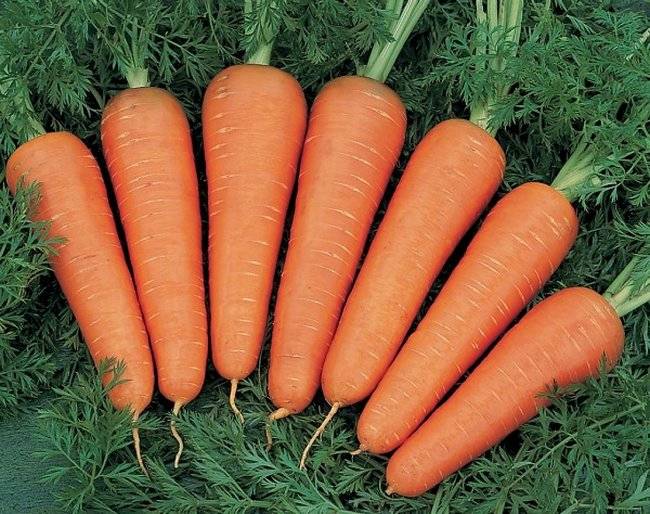

- Amsterdam is an early ripening variety that yields 80-90 days after sowing. Differs in compact size, orange core and blunt root tip. The mass of one fruit is about 100 grams. A feature of the variety is its exactingness to the soil of growth and regular watering. Vegetable growers recommend sowing seeds in Amsterdam in sandy loam soil fertilized with organic substances. Produces a stable and generous harvest and keeps well during the winter months.
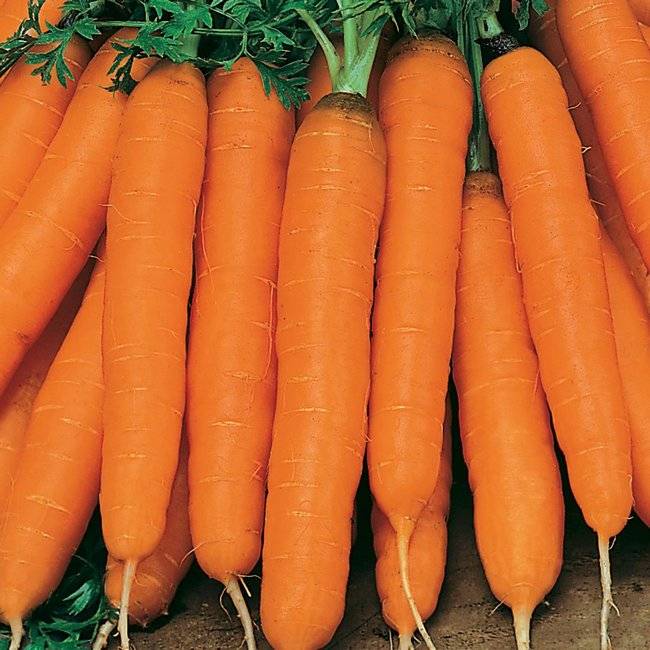

- Shantane is a large universal vegetable crop suitable for processing, raw consumption and long-term storage. Root crops grow short up to 10 cm and blunt-pointed, up to 6 cm in diameter. Mid-season and very productive. Carrots grow within 100-110 days after sowing. The fruits have excellent keeping quality and transportability, their presentation and visual appeal are high.
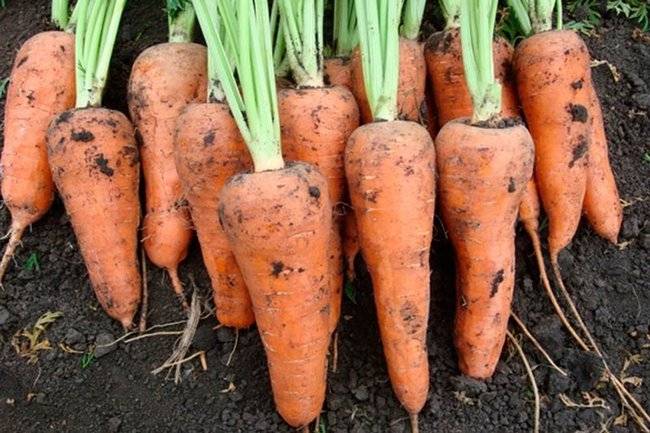

- Nantes is a versatile mid-season carrot that gives a generous harvest. Root vegetables contain a large amount of sugar, which repels carrot flies. According to gardeners, the vegetable is resistant to cracking and the formation of voids inside the fruit, it is formed correctly, taking on an even cylindrical shape. Nantes keeps well during the winter and is well suited for processing.


- Olympus is a late ripening and fruitful variety that is resistant to carrot flies. The fruits are orange-red in color, quite juicy and sweet. They are distinguished by good keeping quality, excellent presentation and even root crops. The mass of carrots is about 130-140 grams, the length is 15 cm on average. The size of root crops increases significantly with regular plant feeding and moderate, regular watering.


Description of the pest and the harm it causes
Carrot flies belong to the Psilidae family. They have a black body and white fluff. The transparent wings are distinguished by the presence of yellowish veins. The legs and tentacles are yellow in color. The insect looks unattractive, so it is easy to find it in the garden. The larvae of the parasite are round and up to 5 mm long.
The summer period begins in early spring, immediately after the snow melts. At this time, the insect lays eggs, choosing for this the beds where the carrots are planted. The larvae penetrate the root system, where they grow and pupate. Thus, at the end of June, the second generation of the carrot fly appears.
The parasite causes significant damage to carrots planted in the garden beds. The larvae gnaw the vegetable almost to the middle. Therefore, the harm is caused not by the direct fly, but by the larvae.
Expert opinion
Stanislav Pavlovich
Gardener with 17 years of experience and our expert
Ask a Question
Attention! To effectively fight the parasite, the period of activity of the carrot fly is taken into account.

